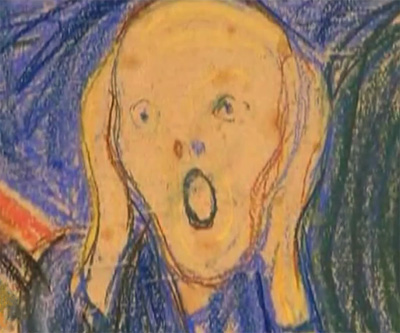
The European Central Bank’s unprecedented new plan to boost inflation and weaken the euro gave gold a much-needed bump on Thursday.
After hovering at four-month lows for more than a week, gold futures during a busy session in New York jumped by double digits to a high of $1,258 an ounce, the best level since May 28.
The European Central Bank on Thursday made good on promises to take bold steps to stimulate the bloc’s economy by taking interest rates into negative territory.
It’s the first time a major central bank has taken such a step. (Denmark experimented with a negative rate but dropped the measure in April.)
ECB President Mario Draghi announced the the deposit rate would be adjusted to -0.10%, that is, banks will have to pay 0.1% interest to the ECB on funds held there.
Before, the ECB paid zero interest on the money parked in its vaults, but that did not stop financial institutions from hoarding it. The thinking behind forcing banks to pay for the privilege, is that it would prompt greater lending to their customers and inject money into the real economy.
The US Federal Reserve has also played around with the idea to alter the interest rate it pays on reserves held on behalf of commercial banks in an efforts to minimize the impact of the tapering of its stimulus program, but US financial institutions warned that a reduction in the 0.25% rate would be passed onto consumers.
The ECB’s move to fight “unacceptably low inflation” in the Eurozone predicted at just 0.7% this year may be followed up later by a fully-fledged quantitative easing (QE) program similar to the one in place in the US since end-2008:
“We think (what we’ve done is) a significant package. Are we finished? The answer is no. We aren’t finished here. If need be, within our mandate, we aren’t finished here,” said when asked why there was no announcement on QE on Thursday.
SEE CHART: Gold price vs rates shows rally catalyst ‘already in place’
The Bank of Japan may hit the gas again on its ongoing stimulus program and if the ECB goes ahead trillions more will be added to all the easy money already sloshing around on global financial markets.
While asset purchases under the Fed’s quantitative easing program is expected to be wound down by end-2014 after pumping $4.2 trillion into the US economy, a rise in interest rates is at least a year away.
Monetary expansion in the US and around the globe, particularly since the financial crisis, has been a massive boon for the gold price.
Gold was trading around $830 an ounce before then Chairman Ben Bernanke announced Q1 in November 2008.
Gold is up some 8% in 2014, but down more than $100 an ounce from its year-to-date high struck mid-March.
Comments
frankinca
Who will use gold as a temporary storage of wealth. I read that the negative interest is about the same as the fees for gold storage, so it doesn’t mean people will go to gold, because the transformation processes are not available for converting to a currency, when a business transaction is needed. Just a matter of time, it is almost universal gold will be a part of the reserve method, SDR’s will be denominated in all gold or a fraction thereof and stored gold will be the basis of establishing a method of financing a transaction.